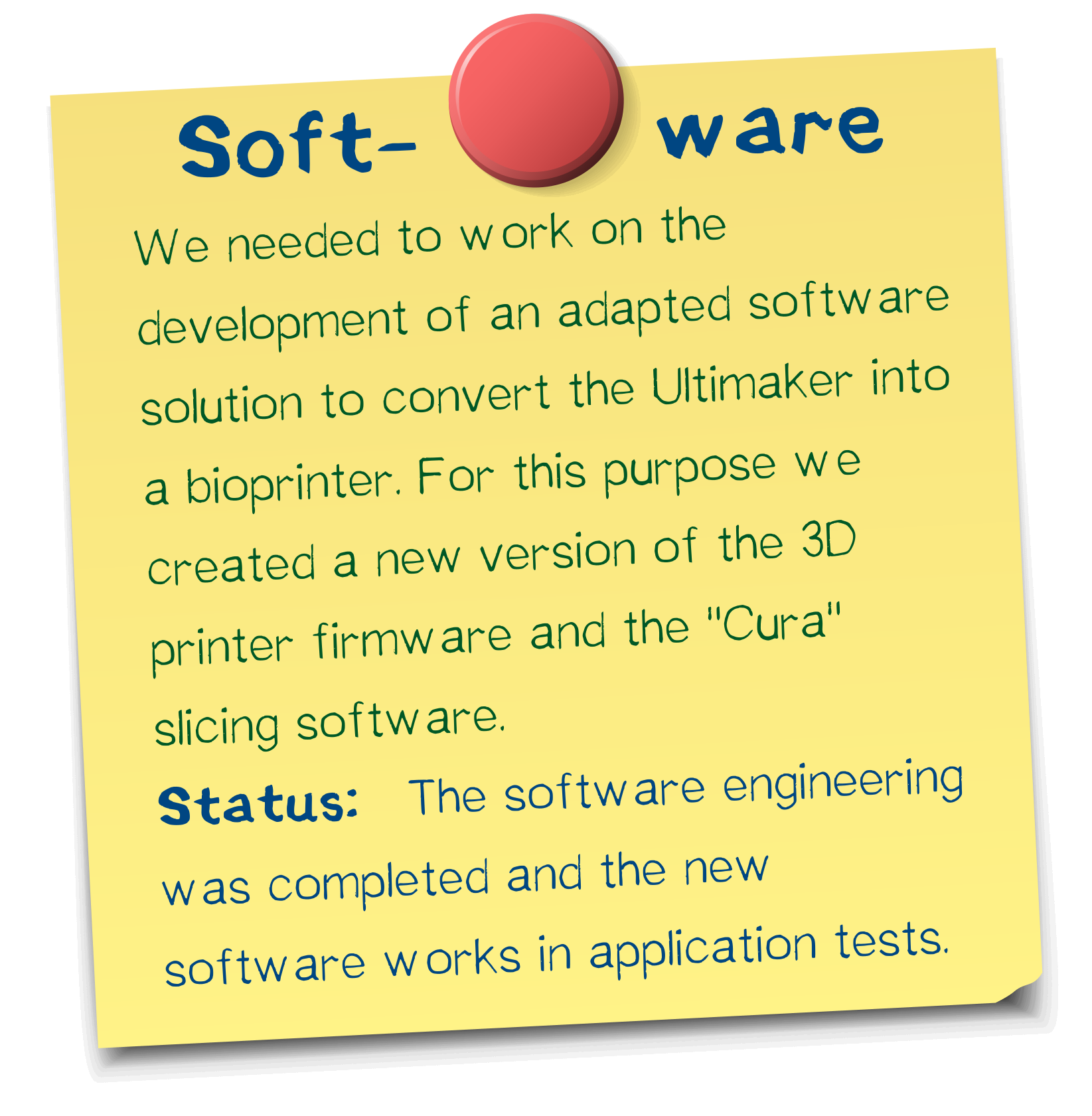Javier.luna (Talk | contribs) |
Javier.luna (Talk | contribs) (→Firmware) |
||
| Line 14: | Line 14: | ||
<div class="white-box"> | <div class="white-box"> | ||
| + | Using a regular 3D-printer limits you to print amorphous structures with molten plastic polymers such as acrylonitrile butadiene styrene (ABS) or polylactic acid (PLA). So we've been upgrading our Bioprinter with a new printhead and a precise DIY syringe pump, which allows us to print structures composed of cells embedded in a proteinmatrix instead. To drive the syringe pump and control the new printing features we reprogrammed the Ultimaker 2+ firmware as well as the Cura software (Cura 2.1), which compiles the 3D print files in the gcode format. | ||
| + | <br> | ||
| + | </div> | ||
==Cura Software== | ==Cura Software== | ||
Revision as of 02:24, 20 October 2016
Software: Getting the bioprinter working
Firmware
Using a regular 3D-printer limits you to print amorphous structures with molten plastic polymers such as acrylonitrile butadiene styrene (ABS) or polylactic acid (PLA). So we've been upgrading our Bioprinter with a new printhead and a precise DIY syringe pump, which allows us to print structures composed of cells embedded in a proteinmatrix instead. To drive the syringe pump and control the new printing features we reprogrammed the Ultimaker 2+ firmware as well as the Cura software (Cura 2.1), which compiles the 3D print files in the gcode format.
Cura Software
</div>
References



